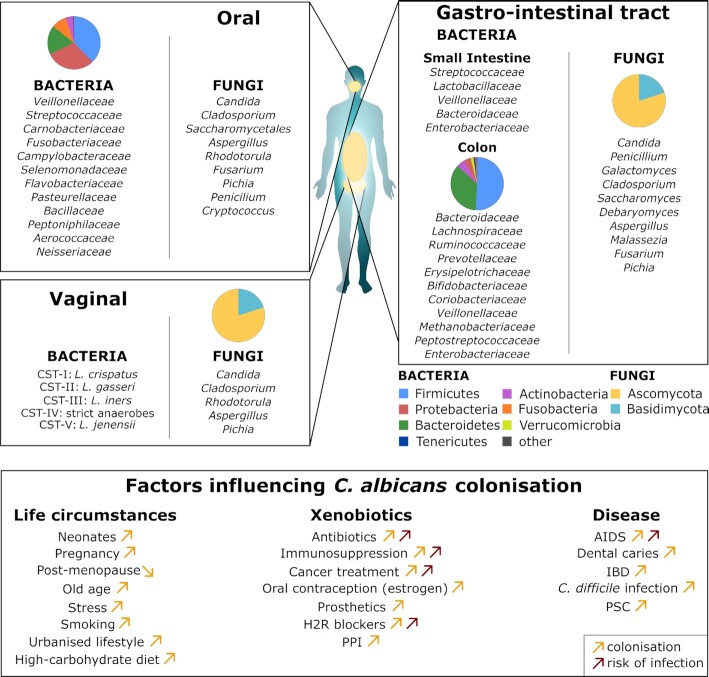Figure 6.
Oral, vaginal and GI microbiota, and factors that influence C. albicans colonisation of these body sites. The major microbial groups (family level for bacteria and genus level for fungi) of the healthy oral cavity (only for bacteria) (Bik et al. 2010; Dewhirst et al. 2010), GI tract (Booijink et al. 2010; Arumugam et al. 2011; Zhou et al. 2013; Villmones et al. 2018) and vagina (Human Microbiome Project Consortium 2012) are listed in decreasing order of abundance. Pie charts indicate the relative abundance of the phyla in a representative healthy oral cavity and colon (see key for colour code). The fungal component of the oral microbiota is extremely variable, and many fungi present in this compartment are likely to be transient (see text). Therefore, for the oral cavity, the fungal genera are not presented in descending order of abundance, and no pie chart is provided. The lower panel summarises factors that influence the degree of C. albicans colonisation (yellow) and likelihood of infection (brown arrows) of these mucosal surfaces: arrows up, increased likelihood of colonisation/infection; arrows down, decreased likelihood of colonisation/infection. See text.

